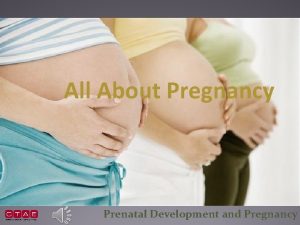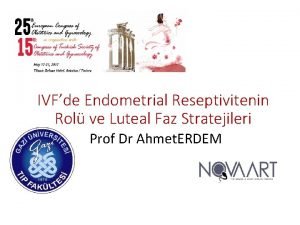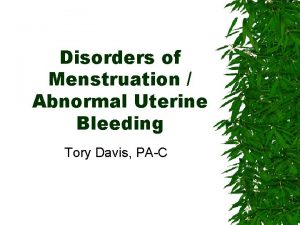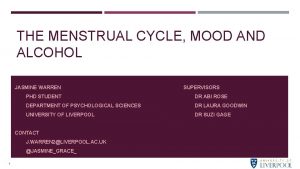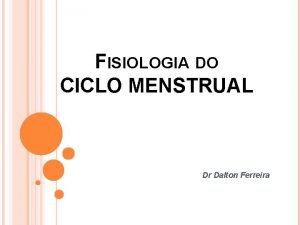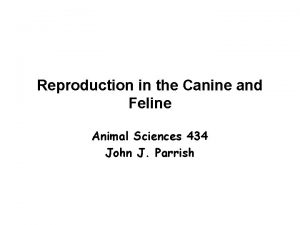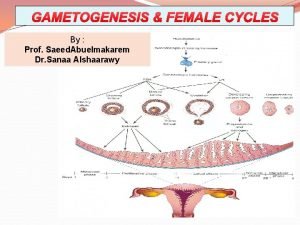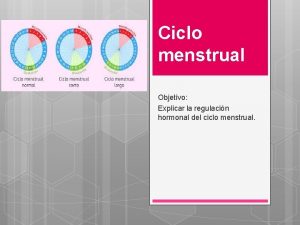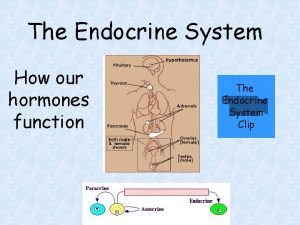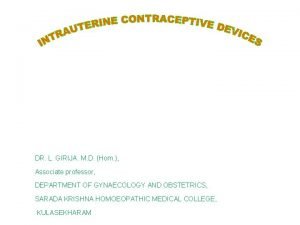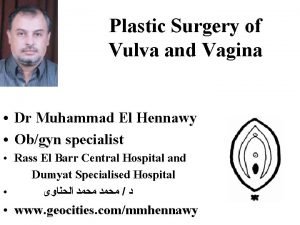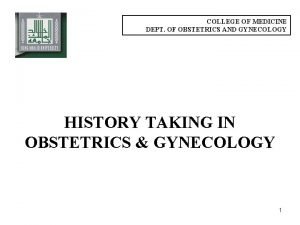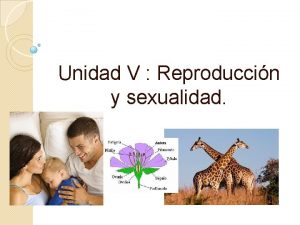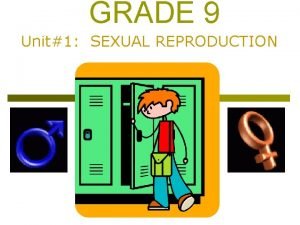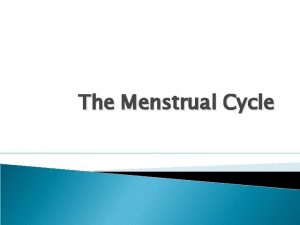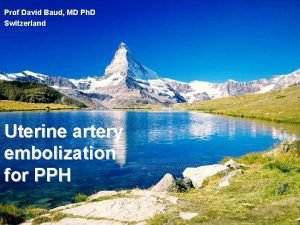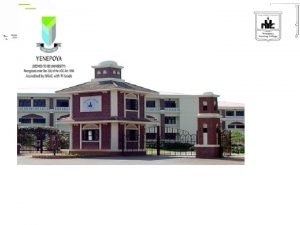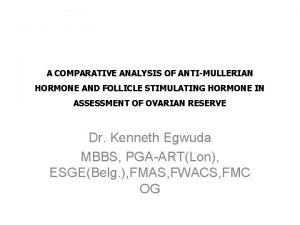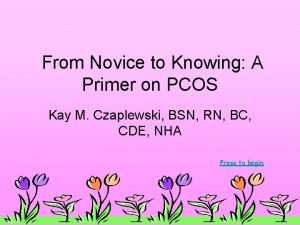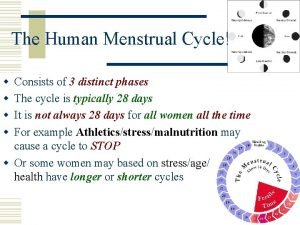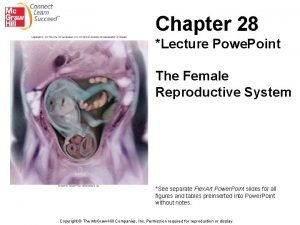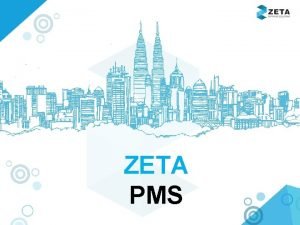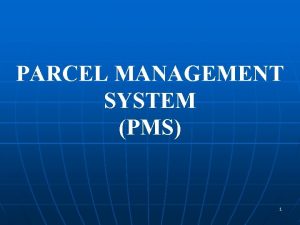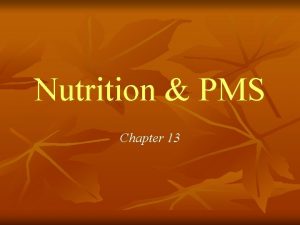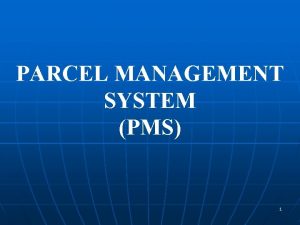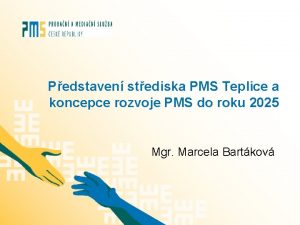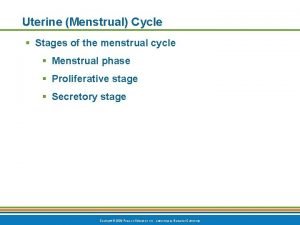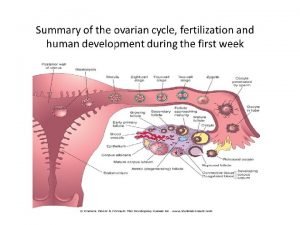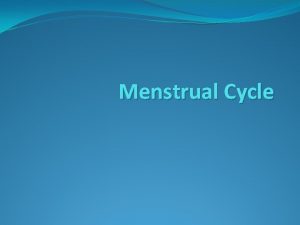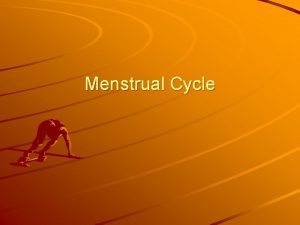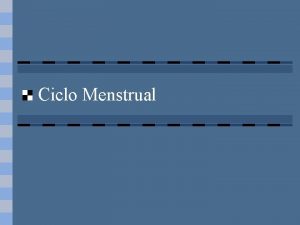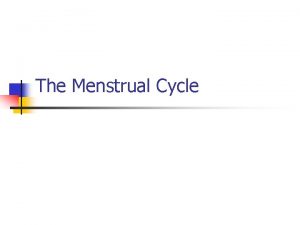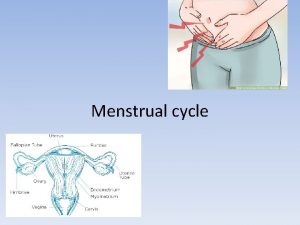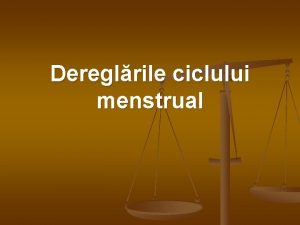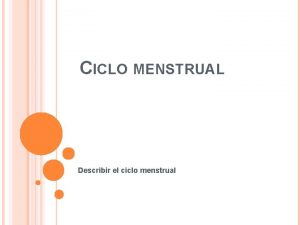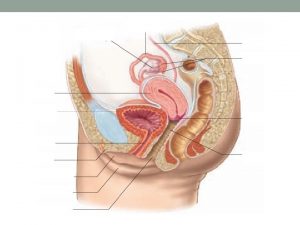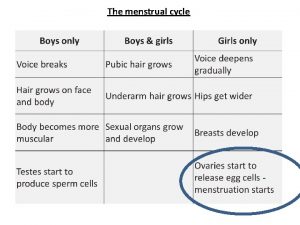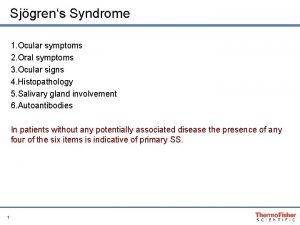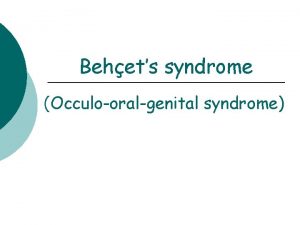PMS pre Menstrual syndrome symptoms usually Symptoms usually





























- Slides: 29

PMS: pre Menstrual syndrome • symptoms usually _ • Symptoms usually stop when menstruation begins, or shortly thereafter. • exact cause of PMS has not been identified • estimated to affect up _______________ during their childbearing years • Symptoms: – headache, ankle swelling, back ache, abdominal cramps, abdominal pain, breast tenderness, weight gain, cold sores, acne flare-ups, nausea, constipation/diarrhea, food cravings, irritable, clumsy

Dysmenorrhea • • Begins a day or so before menstruation and ends when the bleeding stops • May be related to _ • Primary dysmenorrhea: – occurs in “healthy” women. – not related to any specific problems with the uterus or other pelvic organs. • Secondary dysmenorrhea: – caused by ____________________ or structural abnormality either within or outside the uterus

Genetic Sex Determination • Genetic sex is determined by the sex chromosomes each gamete contains • There are two types of sex chromosomes_ • Females have two X chromosomes; males have one X and one Y • Hence, all eggs have an X chromosome; half the sperm have an X, and the other half a Y • A single gene on the Y chromosome, the _____________, initiates testes development and determines maleness

Development of External Genitalia: Male • Under the influence of testosterone • _________________ enlarges forming the penis • __________________ elongates and closes completely • Urethral folds give rise to the _ • __________________ swellings develop into the scrotum

Development of External Genitalia: Female • In the _ • Genital tubercle gives rise to the _ • The ________________ as the vestibule • The urethral folds become _ • The labioscrotal swellings _

Descent of the Gonads • About 2 months before birth and stimulated by testosterone, the _____________________ and enter the scrotum • – fibrous cord that extends from the testes to the scrotum • Spermatic cord – blood vessels, nerves, and fascial layers that help suspend the testes • Ovaries also descend, but are ________________________ at the pelvic brim

Development Aspects: Puberty • Reproductive organs grow to adult size and become functional • Secondary sex characteristics appear • Characteristics of puberty – Males • _____________________ and scrotum, appearance of axillary and facial hair, _ – Females • enlarging of the breasts, __________________ , and dependable ovulation

Menopause • Ovulation and menses _ • Without sufficient _____________ , reproductive organs and breasts atrophy – – Skin blood vessels undergo intense vasodilation (hot flashes occur) – Gradual thinning of the skin and bone loss • Males have no equivalent to menopause

From Egg to Embryo • Pregnancy – events that occur from _ • – the developing offspring • – from the last menstrual period until birth

From Egg to Embryo • Preembryo – conceptus from _ • Embryo – conceptus during the _ • Fetus – conceptus from the _

Accomplishing Fertilization • The oocyte is viable for _ • Sperm is viable _ • For fertilization to occur, coitus must occur no more than: – Three days before ovulation – 24 hours after ovulation • Fertilization – when a sperm fuses with an egg to _

Sperm Transport and Capacitation • Fates of ejaculated sperm: – Leak out of the vagina immediately after deposition – – Fail to make it through the cervix – Dispersed in the uterine cavity or destroyed by _ – Reach the uterine tubes • Sperm must undergo ________________ before they can penetrate the oocyte

Acrosomal Reaction and Sperm Penetration • An ovulated oocyte is encapsulated by: – The _ – Extracellular matrix • Sperm binds to the zona pellucida and undergoes the _ – ___________________ are released near the oocyte – Hundreds of acrosomes release their enzymes _


Completion of Meiosis II and Fertilization • Upon entry of sperm, the secondary oocyte: – – Casts out the second polar body • The ovum nucleus swells, and the two nuclei approach each other • When fully swollen, the two nuclei are called _ • Fertilization – when the _

Preembryonic Development • The first cleavage produces _ • – the 16 or more cell stage (72 hours old) • By the fourth or fifth day the preembryo consists of 100 or so cells (blastocyst)

Preembryonic Development • • a fluid-filled hollow sphere composed of: – A single layer of _ – An _ • Trophoblasts take part in _ • The inner cell mass becomes the _

Implantation • Begins ___________________ when the trophoblasts adhere to a properly prepared endometrium • The trophoblasts then proliferate and form _ – Cytotrophoblast • cells of the inner layer that retain their cell boundaries – Syncytiotrophoblast • cells in the outer layer that lose their plasma membranes _

Implantation • The implanted blastocyst is covered over by endometrial cells • Implantation is completed by the _

Implantation • Viability of the corpus luteum is maintained by human chorionic gonadotropin (________) secreted by the _ • h. CG prompts the corpus luteum to continue to secrete progesterone and estrogen • Chorion – developed from trophoblasts after implantation, continues this hormonal stimulus • Between the second and third month, the placenta: – Assumes the role of progesterone and estrogen production – Is providing _

Placentation • Formation of the placenta from: – – ___________________ endometrial tissues • The placenta is fully formed and functional by the _

Placentation • Embryonic placental barriers include: – The _ – The endothelium of embryonic capillaries • The _______________ also secretes other hormones – human placental lactogen, human chorionic thyrotropin, and relaxin

Embryonic Membranes • Amnion – Provides a ___________________ that protects the embryo – Helps maintain _ – Amniotic fluid comes from maternal blood, and later, fetal urine

Embryonic Membranes • – Forms part of the _ – Produces earliest _____________ and vessels – Is the source of primordial germ cells

Embryonic Membranes • – a small outpocketing at the caudal end of the yolk sac – Structural base for the _ – Becomes part of the _ • – helps form the _ – Encloses the embryonic body and all other membranes

Gastrulation • During the 3 rd week, the ___________________b ecomes a _ • The primary germ layers are ectoderm, mesoderm, and endoderm

Primary Germ Layers • Serve as primitive tissues from which all body organs will derive • – forms structures of the nervous system and skin epidermis • – forms epithelial linings of the digestive, respiratory, and urogenital systems • – forms all other tissues • Endoderm and ectoderm are securely joined and are considered epithelia

Effects of Pregnancy • – ____________________ develops a purplish hue • Breasts enlarge and their _ • The uterus expands, occupying most of the abdominal cavity

Effects of Pregnancy • _______________ is common due to the change of the body’s center of gravity • _______________ causes pelvic ligaments and the pubic symphysis to relax • Typical weight gain is about 29 pounds
 Difference between period pain and pregnancy pain
Difference between period pain and pregnancy pain Pms vs pregnancy
Pms vs pregnancy Menstrual sponge cvs
Menstrual sponge cvs Menstrual döngü hormon grafiği
Menstrual döngü hormon grafiği Menstrual cycle stages
Menstrual cycle stages Menstrual cycle terminology
Menstrual cycle terminology Conclusion for menstrual cycle
Conclusion for menstrual cycle Teca celula
Teca celula How do dogs breed
How do dogs breed Stage of menstrual cycle
Stage of menstrual cycle Iron panel interpretation
Iron panel interpretation Menstrual blood
Menstrual blood Ciclo menstrual
Ciclo menstrual Menstrual cycle positive feedback
Menstrual cycle positive feedback Menstrual blood
Menstrual blood Does menstrual cup breaks virginity
Does menstrual cup breaks virginity Gravida status
Gravida status Sexualidad
Sexualidad Safe period chart
Safe period chart Menstrual cycle
Menstrual cycle Ciclo de krebs maqueta
Ciclo de krebs maqueta Prof baud
Prof baud Dişinin menstrual döngüsü
Dişinin menstrual döngüsü Menstrual cycle defination
Menstrual cycle defination Conclusion for menstrual cycle
Conclusion for menstrual cycle Menstrual cycle positive feedback
Menstrual cycle positive feedback Endometrial histology menstrual cycle
Endometrial histology menstrual cycle The human menstrual cycle
The human menstrual cycle Milk is continually secreted into the mammary acini
Milk is continually secreted into the mammary acini Miub gyne
Miub gyne


